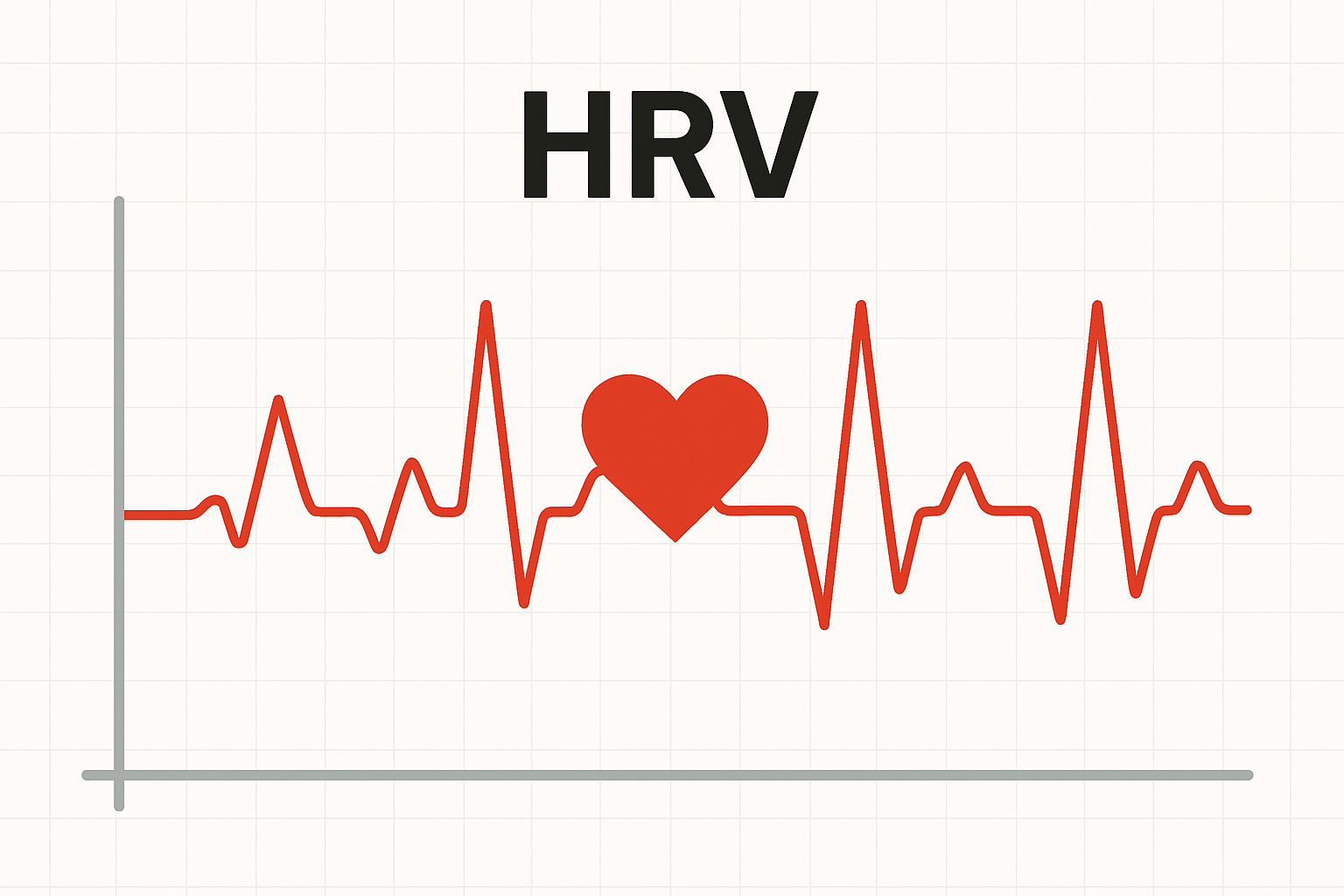
HRV: The Secret Signal Your Body Sends About Fitness and Recovery
Discover how Heart Rate Variability (HRV) provides crucial insights into your body's stress, recovery, and readiness to train for optimal fitness performance.

SensAI Team
6 min read
HRV: The Secret Signal Your Body Sends About Fitness and Recovery
If you’ve spent time around athletes, coaches, or even fitness tech enthusiasts, chances are you’ve heard the acronym HRV floating around. It sounds high-tech, maybe even complicated, but the truth is: Heart Rate Variability (HRV) is one of the simplest, most powerful insights into how your body is doing — right now.
Let’s break it down.
What Is HRV?
At its core, HRV is a measure of the tiny variations in time between your heartbeats.
- If your heart beats 60 times in a minute, it’s not actually ticking like a metronome.
- Some beats might be 0.95 seconds apart, others 1.05 seconds.
- That “wobble” is your HRV.
A higher HRV generally signals a flexible, adaptable nervous system. A lower HRV may mean your body is under stress, fatigued, or not fully recovered.
Why Does HRV Matter for Fitness?
Think of HRV as a stress and recovery scorecard.
- High HRV → Your body is resilient, recovered, and ready to take on training.
- Low HRV → You may need to dial things back, rest, or focus on recovery.
That’s why elite athletes (and increasingly, weekend warriors) track HRV daily. It’s like having a built-in readiness coach.
Factors That Influence HRV
Your HRV isn’t static — it shifts based on dozens of factors. Some of the biggest players include:
- Sleep quality 💤 – Poor sleep often tanks HRV.
- Training load 🏋️ – Intense workouts temporarily lower HRV.
- Stress 😰 – Emotional and mental stress show up in your HRV.
- Nutrition & hydration 🥗💧 – Alcohol, dehydration, or junk food can drag it down.
- Age & genetics 👶👴 – Younger people tend to have higher HRV, but lifestyle matters too.
How to Track HRV
The good news: you don’t need lab equipment.
- Wearables: Devices like Whoop, Oura Ring, Apple Watch, or Garmin can track HRV passively.
- Chest straps: Some heart rate monitors (Polar, Garmin) provide accurate HRV data.
- Apps: HRV4Training or Elite HRV use your phone’s camera or connected strap.
Tip: Track it consistently, ideally first thing in the morning. Comparing your HRV to your own baseline is more useful than comparing to someone else’s score.
Using HRV to Guide Your Training
Here’s where things get practical:
- High HRV Day: Go for that long run, heavy lift, or hard session — your body is primed.
- Low HRV Day: Shift to active recovery, mobility work, or light cardio. Your body will thank you.
It’s not about skipping workouts every time HRV dips — it’s about adjusting intelligently to prevent burnout and injury.
How to Improve HRV (and Your Fitness)
You can train your HRV the same way you train muscles:
- Prioritize sleep – Aim for consistent, high-quality rest.
- Breathe – Slow, deep breathing stimulates your parasympathetic (“rest and digest”) system.
- Stay active – Regular exercise (without overtraining) boosts HRV over time.
- Fuel well – Whole foods, hydration, and moderating alcohol matter.
- Stress management – Meditation, nature walks, or journaling all help.
Bottom Line
HRV isn’t just another fitness buzzword. It’s a window into your body’s inner balance — showing when you’re ready to push and when you need to recover.
Think of it as your daily fitness compass. Track it, learn your patterns, and you’ll unlock smarter training, fewer injuries, and better performance.
Ready to discover how AI can help you make sense of your HRV patterns and optimize your training? Download SensAI from the App Store and get personalized insights from your wearable data.